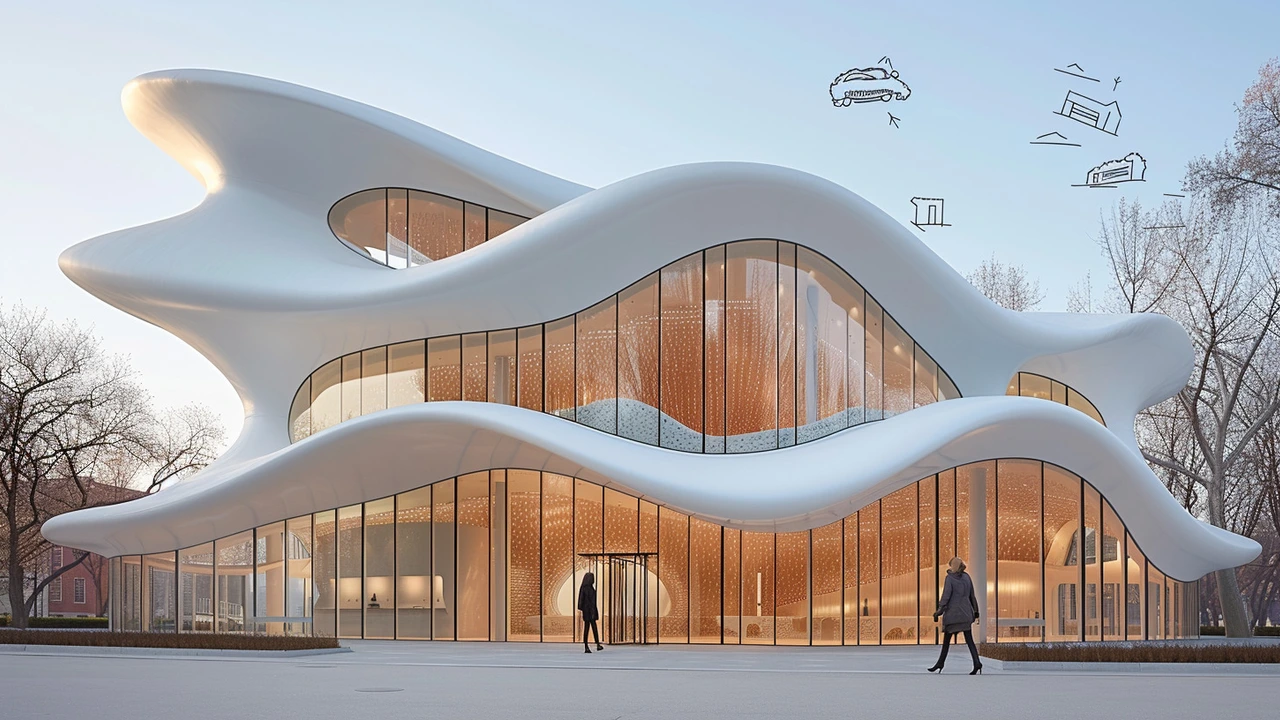Artistic Temperament: How Creativity Shapes Buildings and Art
Some buildings feel like they were made by someone who took risks. That feeling—unexpected curves, dramatic ornament, a sudden splash of color—is what I call artistic temperament. It’s the impulse that pushes designers to break rules, tell stories, or pour personality into a facade or room.
Artistic temperament shows up in both art and architecture. In buildings it appears as bold silhouettes, decorative detail, unusual materials, or surprising scale. In art it’s choices of medium, scale, and color that refuse to blend in. When you notice those choices, you’ll start seeing whole neighborhoods differently.
Why care? Because temperament changes how we experience places. A street of plain boxes feels anonymous; one bold building can make the whole block memorable. Knowing what to look for helps you read history, spot influence across styles, and find design ideas for your own space.
Want quick ways to spot it? Look at entrances—are they theatrical or simple? Check rooflines and windows for unusual shapes. Notice ornament: are details hand-carved, floral, geometric, or machine-made? Touch materials when you can—texture tells you about intent. Ask whether form follows function, or whether the form is making a statement.
On this site you’ll find many examples that show different temperaments. Read "Art Nouveau Architecture: A Unique Blend of Art and Function" for flowing, nature-driven creativity. "Postmodern Architecture: Rethinking Design from the Ground Up" shows playful, rule-bending ideas. For dramatic, history-rich expression, try "Gothic Revival Architecture: Imagination and Innovation in Every Spire" or "Baroque Architecture: Legacy and Impact on Modern Design." If you prefer quiet craft, "American Craftsman Design: History, Key Features, and Timeless Appeal" explains a restrained, honest temperament.
How to use this tag: start with an overview piece, then pick a style that feels interesting and follow related posts. Use the site keywords to jump between eras—Roman engineering, Byzantine mosaics, Renaissance order, or modern expression. Take notes on features you like and test them in small projects at home.
If you’re a maker, try these practical moves: pick one bold element (a colorful door, an arched window) and make everything else quiet; experiment with texture and light before changing structure; sketch ideas at full scale on paper or tape walls to judge balance. Small tests save money and keep the temperament intentional.
When you travel, aim for morning or late afternoon light for good photos and softer shadows. Ask at visitor centers about guided tours that highlight makers and materials. Most importantly, look slowly—temperament often hides in small details that reward time and attention.
Explore the tag to find examples, how-tos, and design tips. If you want curated picks, start with Art Nouveau, then jump to Postmodern and Gothic Revival. Come back often—creative ideas travel fast and change how we see our cities.
Best reads to start
Start with Ancient Roman Architecture pieces for engineering lessons; then read Byzantine Architecture and Renaissance pieces for ornament and order. Finish with Beaux-Arts and Georgian to see how temperament became civic language.

Expressionist Architecture: A Journey into the Heart of Design
Hey there! Let me take you on an intriguing journey into the heart of Expressionist Architecture. We will be exploring this fascinating design style that marked an era, showcasing its unique aesthetics and meanings. If you're a fan of architecture or just appreciate the poetry of space and structure, you will find this exploration riveting. Welcome to this adventure into the realm of artistic imagination and architectural might.
Read more